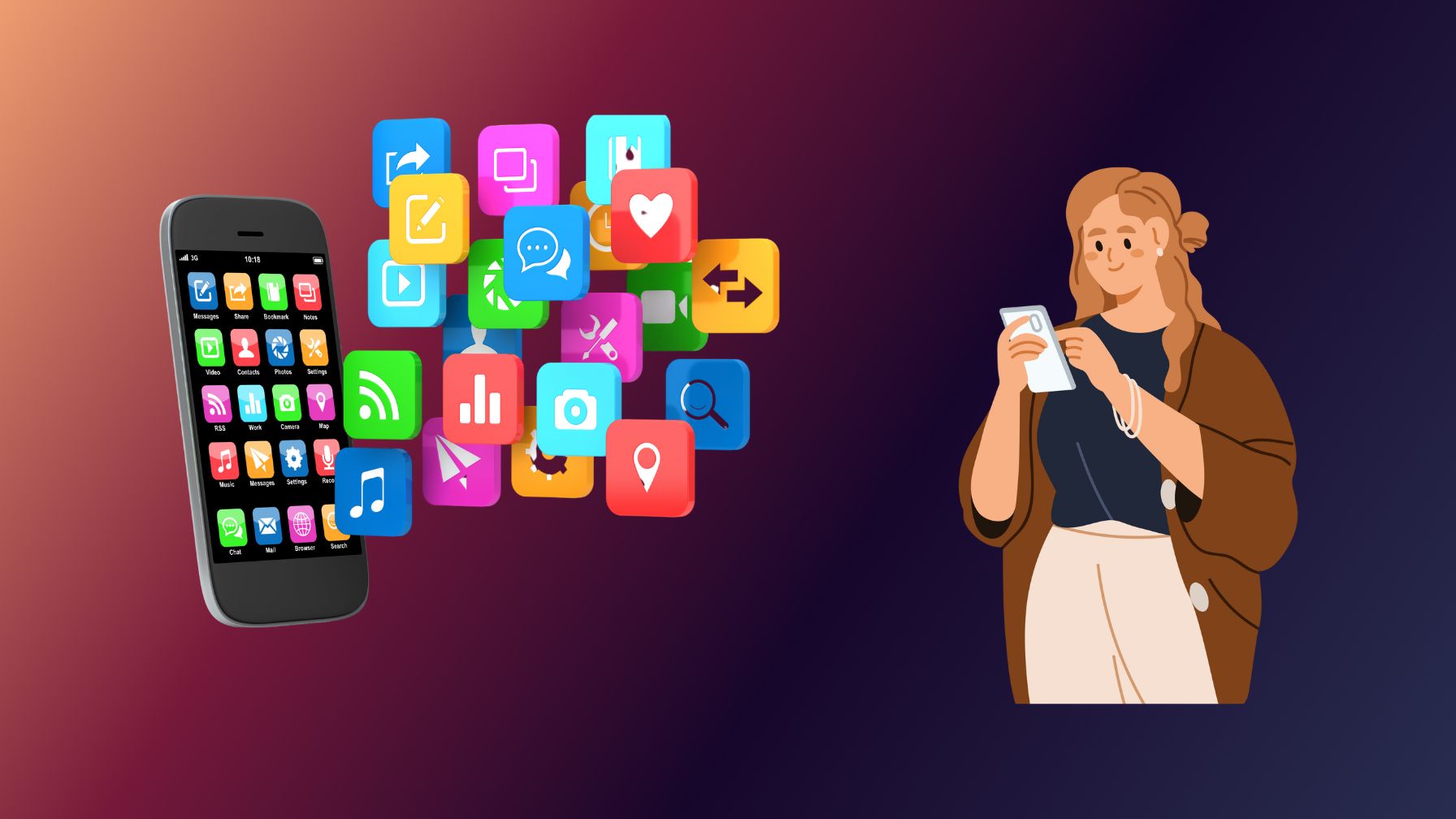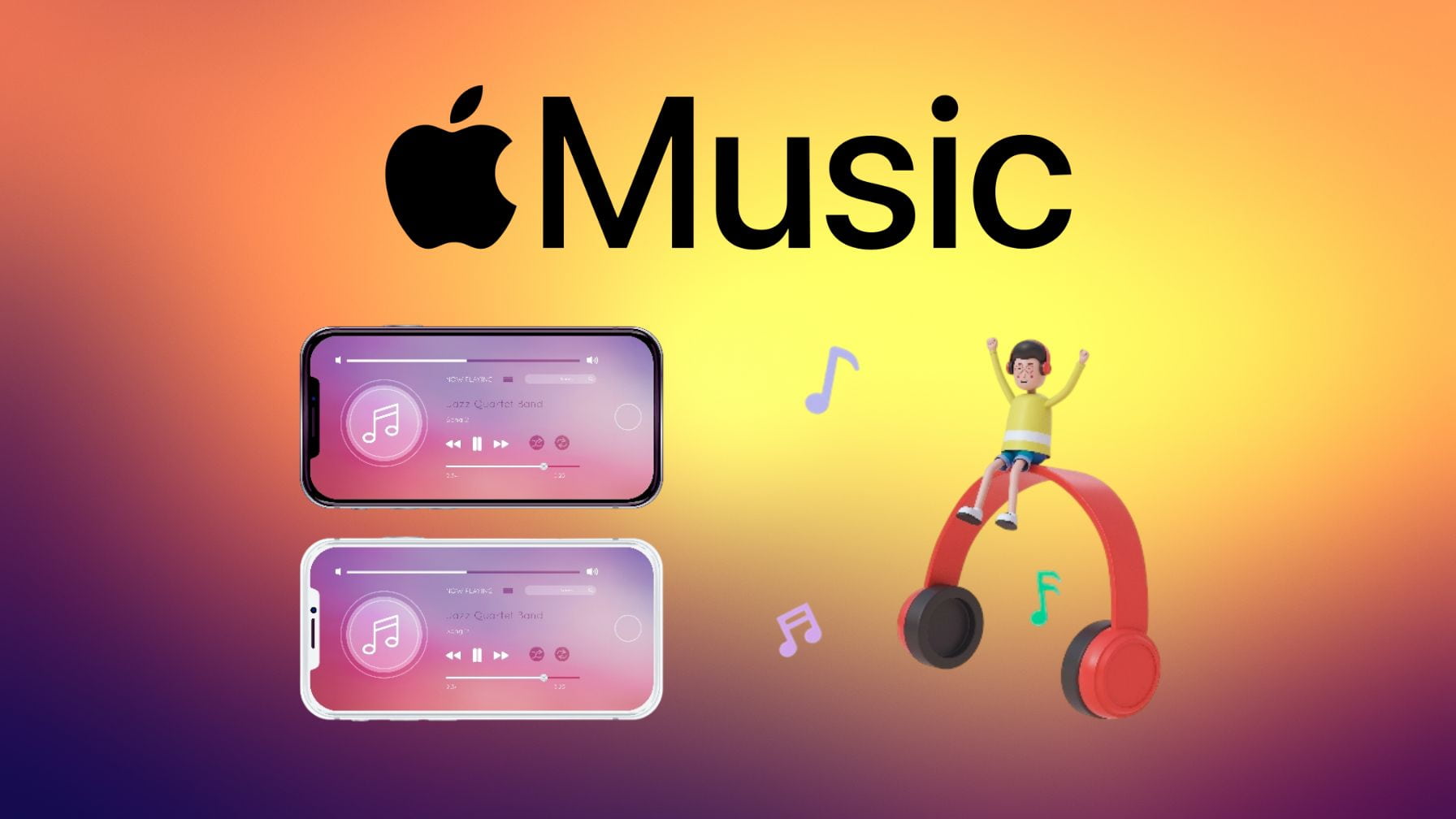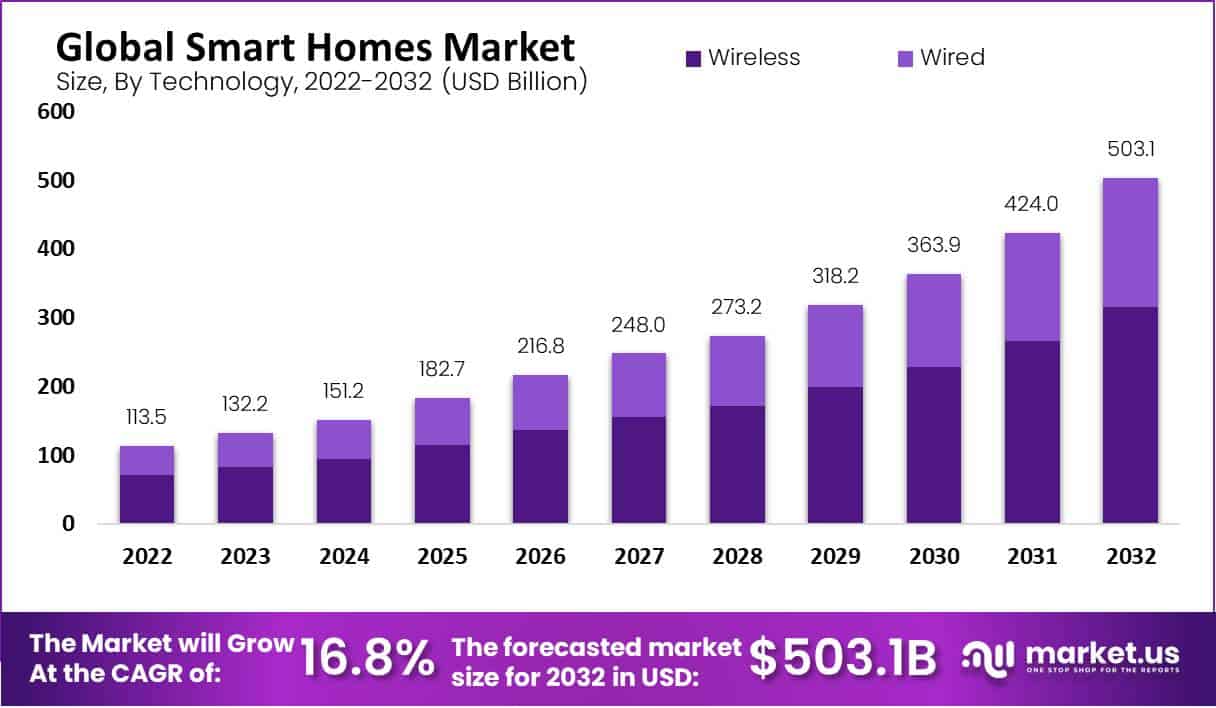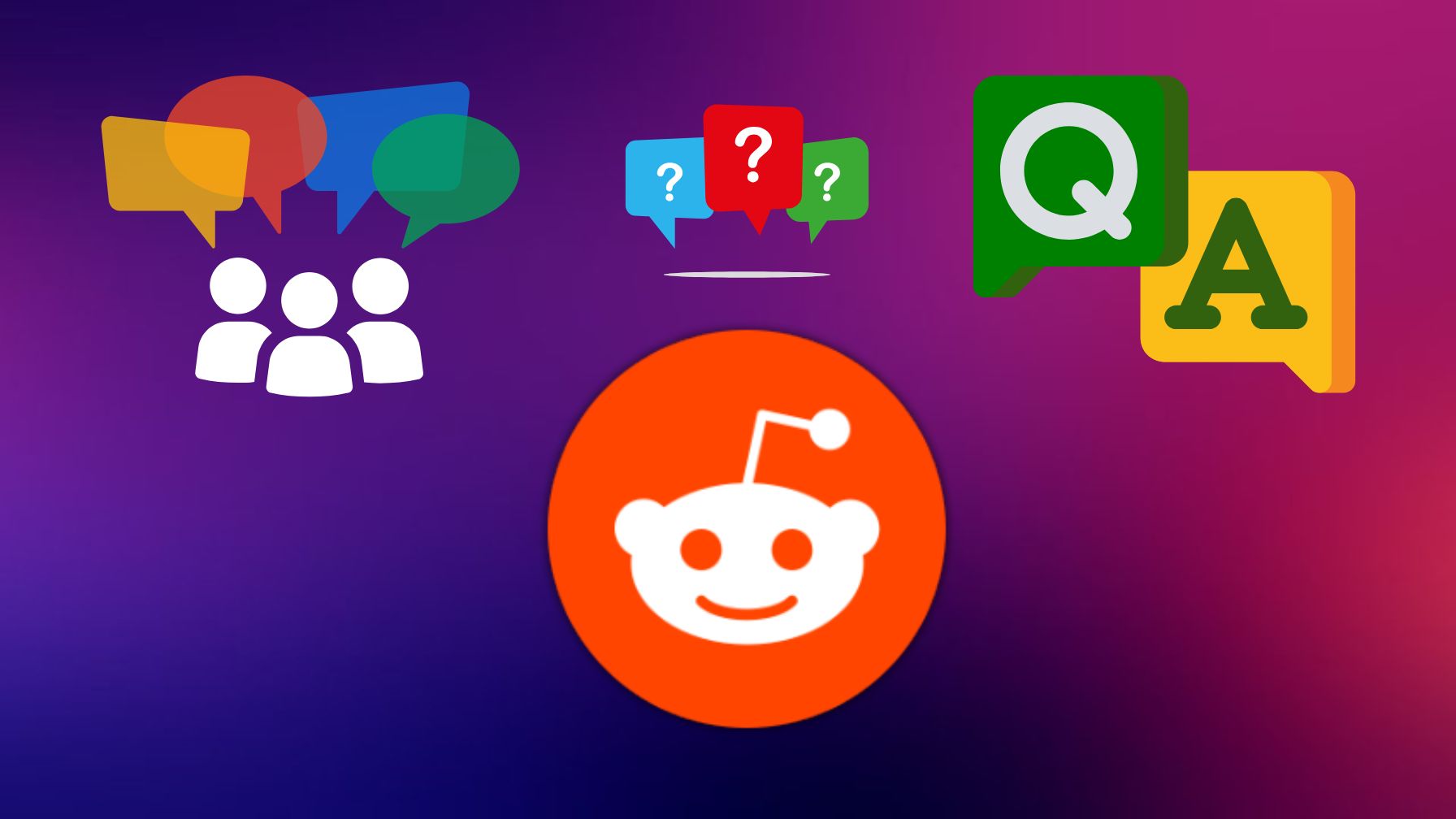WHAT WE HAVE ON THIS PAGE
- Editor’s Choice
- Countries with the Highest Problematic Smartphone Use Scores
- Global Prevalence of Smartphone Addiction
- Gender Differences in Smartphone Usage
- Monthly Android Social Media Screen Time
- Average Daily Screen Time
- Impact on Mental Health and Sleep
- Average Daily Smartphone Usage by Generation
- Smartphone Dependency Among Students
- Correlation Between Social Media Use and Addiction
- Negative Social Media Effects on US Teenagers by Emotional Well-Being
- Parental Concerns and Youth Usage Patterns
- Smartphone Addiction and Physical Health Effects
- Most Popular Smartphone Activities Worldwide
- Prevention and Digital Wellbeing Initiatives
- Recent Developments in Smartphone Usage Research
- Nomophobia Is Alarmingly Common Among Smartphone Users
- Conclusion
- Sources
It started with a buzz. Not the buzz of discovery, but the familiar hum of a phone on a dinner table, in a classroom, at 2 a.m. beside a pillow. For millions, this sound no longer signals a notification. It’s a reflex, an impulse, a need. The world in 2025 is more connected than ever, but with that connectivity comes a growing dependency. Smartphone addiction is no longer a fringe concern; it’s a global phenomenon shaping behavior, health, and productivity. Let’s unpack the latest data to understand just how deeply smartphones have embedded themselves into our daily lives.
Editor’s Choice
- In 2025, over 1.58 billion people globally are estimated to experience some level of smartphone addiction, a 7.4% increase from last year.
- U.S. adults now check their phones an average of 352 times per day, or once every 2.7 minutes during waking hours.
- 71% of teenagers in the U.S. admit they feel “anxious” or “irritable” when separated from their smartphones for more than 30 minutes.
- Among adults aged 25–40, screen time has jumped to 4.9 hours/day.
- 82% of college students surveyed in early 2025 reported they believe they are “probably addicted” to their smartphones.
- Smartphone usage-related sleep disorders affected more than 620 million people worldwide in Q1 2025.
- 48% of Gen Z workers say smartphones reduce their work productivity daily.
Countries with the Highest Problematic Smartphone Use Scores
- China reported the highest smartphone addiction score at 36.18.
- Saudi Arabia followed closely with a score of 35.73.
- Malaysia recorded a high problematic use score of 35.43.
- Brazil showed significant smartphone dependency with a score of 32.00.
- South Korea registered a score of 31.62, reflecting notable usage issues.
- Iran had a score of 31.52, indicating widespread mobile reliance.
- Canada recorded a problematic use score of 31.11.
- Turkey followed with a score of 30.92.
- Egypt showed lower levels of smartphone addiction at 29.54.
- Nepal had the lowest score in the group at 29.41, though still concerning.
These insights highlight the extent of smartphone overuse in various countries, underscoring the global nature of digital dependence.
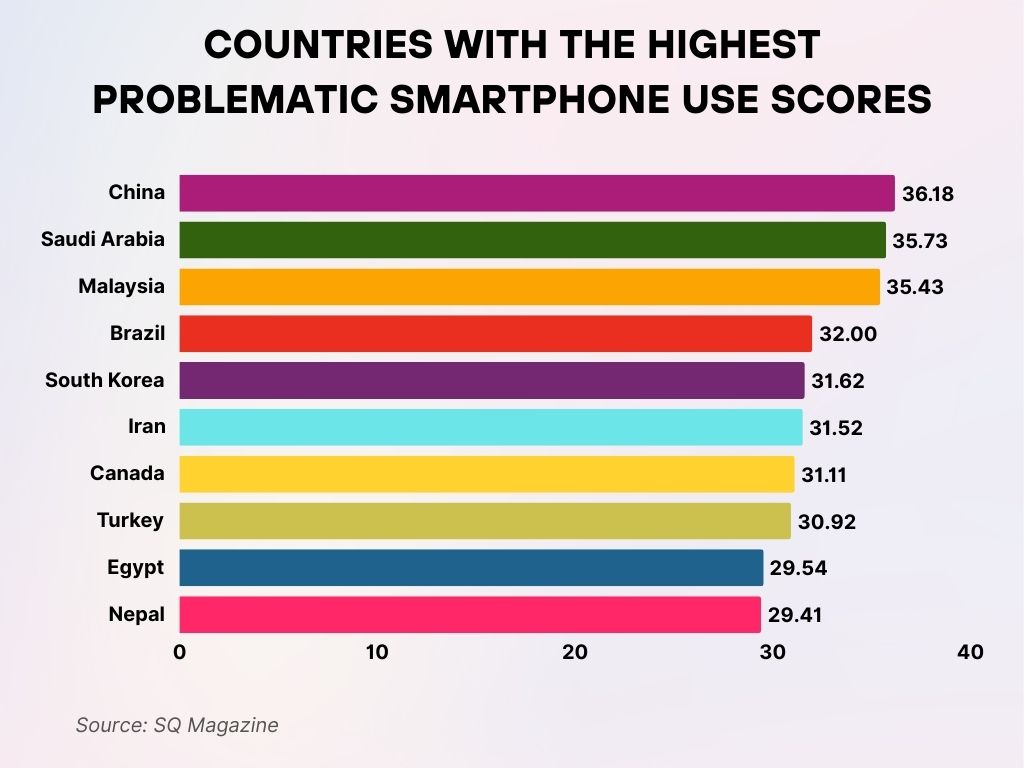
Global Prevalence of Smartphone Addiction
- India now leads the world in smartphone overuse, with 32% of users showing signs of addiction, followed by Brazil at 28% and the U.S. at 25%.
- In 2025, approximately 21% of global smartphone users met the clinical criteria for behavioral addiction to their devices.
- A World Health Organization (WHO) study from March 2025 identified smartphone addiction as a public mental health concern in over 54 countries.
- South Korea has implemented national-level intervention programs after reporting 29% of high school students as smartphone dependent.
- China’s urban youth now report an average of 5.3 hours of non-essential screen time daily, with 23% showing withdrawal symptoms when restricted.
- A UNESCO report in February 2025 revealed that 24% of adults globally use their phones during religious services, family meals, or other social rituals.
- Germany’s Federal Health Institute classified smartphone addiction as a growing “digital dependency crisis,” estimating 8 million adults to be currently affected.
- Across the European Union, the prevalence rate for problematic smartphone use has reached 17%.
Gender Differences in Smartphone Usage
- In 2025, females report slightly higher rates of smartphone addiction than males—26% vs. 21%—with social media as the top contributing factor.
- Men, on average, spend more time on mobile gaming and video content, clocking 4.3 hours/day, compared to 3.7 hours/day for women.
- Women aged 18–35 are 43% more likely to engage in late-night smartphone use than their male counterparts.
- Males between 15–30 are more prone to addiction via gaming apps, accounting for 65% of app-based game revenue in early 2025.
- TikTok and Instagram engagement remains higher among women, with female users contributing to 58% of daily watch time on both platforms combined.
- 23% of mothers surveyed in March 2025 admitted to using smartphones to “escape stress”, while 17% of fathers reported the same.
- Males aged 45+ saw a 19% rise in mobile sports betting app usage in Q1 2025, leading to new concerns around screen dependency.
- In the U.S., female teenagers (ages 13–17) spend 6.1 hours/day on smartphones, 33% more than male teens of the same age.
- YouTube leads with the highest monthly screen time at 23 hours 42 minutes.
- Facebook and TikTok are tied with 19 hours and 36 minutes each.
- WhatsApp users spend 18 hours and 36 minutes per month.
- Line and Instagram follow at 11 hours 36 minutes and 11 hours 12 minutes, respectively.
- Twitter users average 5 hours and 6 minutes monthly.
- Snapchat, Messenger, and Telegram each show 3 hours of usage per month.
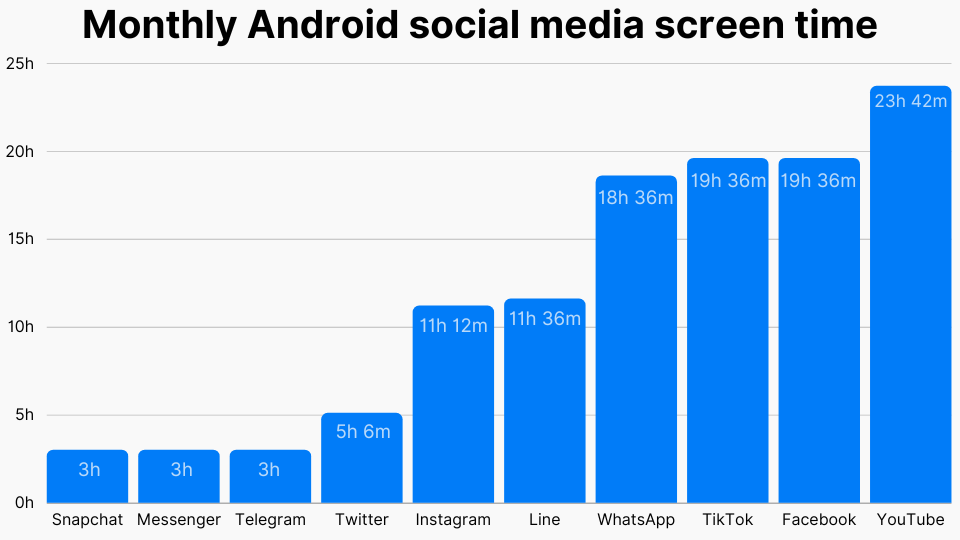
Average Daily Screen Time
- In 2025, global average daily screen time hit 4.8 hours, a 12% increase from the previous year.
- U.S. teens now average 7.2 hours/day of screen time outside of school or homework.
- Working adults in the U.S. spend an average of 5.4 hours/day on smartphones, with 2.1 hours spent on social media alone.
- Mobile video consumption contributes over 35% of daily screen time, with YouTube and TikTok leading usage across all age groups.
- Children aged 6–10 now average 2.9 hours/day of smartphone use.
- A 2025 media study revealed that 44% of screen time globally is passive scrolling—activities linked with low cognitive engagement.
- Women aged 25–39 in North America now average 6.1 hours/day on smartphones, the highest among gender-age groups.
- In South Korea, average smartphone screen time surged to 5.7 hours/day, mostly driven by app-based learning and gaming.
- In the Middle East, Qatar and UAE residents report the longest smartphone screen times in the region, at 6.5 hours/day.
- A new 2025 Nielsen study found that 89% of users multitask while using their phones, often combining it with TV or tablet usage.
Impact on Mental Health and Sleep
- 72% of smartphone-dependent individuals reported symptoms of anxiety or depression in Q1 2025.
- A study by the American Psychological Association in 2025 found a strong link between excessive screen time and sleep disruptions in adults aged 20–45.
- Over 50% of teens who use their phones after midnight report feelings of sadness, irritability, or lack of energy the next morning.
- Melatonin suppression due to blue light exposure from smartphones increased sleep onset delays by an average of 34 minutes.
- Smartphone-induced insomnia affects approximately 418 million people globally, per a February 2025 sleep research journal.
- A large-scale UK study found that 29% of participants using phones before bed reported chronic fatigue the following day.
- Screen use within 30 minutes of bedtime is now considered a “high-risk factor” for poor sleep quality by sleep clinics across the U.S.
- Mental health clinics in the U.S. reported a 16% rise in phone-related anxiety cases in early 2025 compared to the same period in 2024.
- Young adults (ages 18–30) who used phones for more than 5 hours/day showed a 21% higher rate of depressive symptoms than those using less than 2 hours.
- Mindfulness therapy centers now offer specialized treatments for screen-related stress, with over 12,000 sessions booked per week across the U.S. alone.
Average Daily Smartphone Usage by Generation
- Gen Z spends the most time on smartphones, averaging 6 hours and 37 minutes daily.
- Millennials follow closely with 5 hours and 57 minutes of daily smartphone use.
- Gen X users average 4 hours and 44 minutes per day on their devices.
- Boomers use smartphones the least, spending 3 hours and 38 minutes daily.
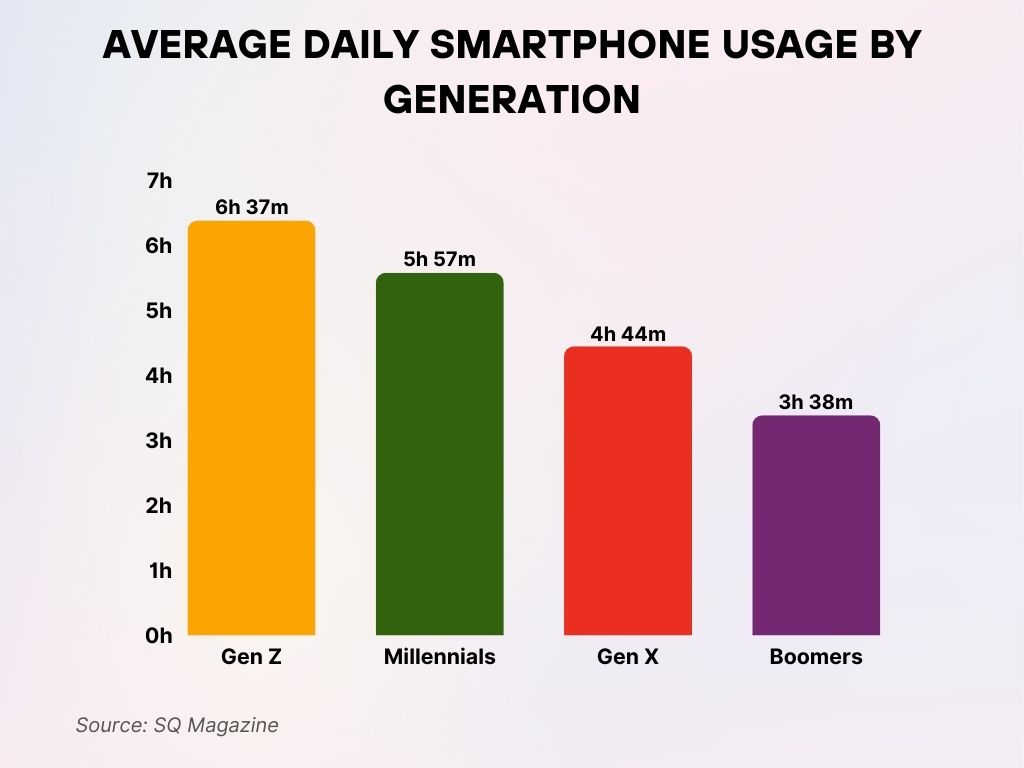
Smartphone Dependency Among Students
- In 2025, 82% of high school students said they struggled to stay off their phones during class without strict enforcement.
- College students report checking their phones an average of 11 times per class, reducing academic focus and performance.
- Middle school educators now rank smartphone distraction as the #1 barrier to student engagement.
- According to the National Education Technology Plan, 24% of students say they use smartphones to cope with academic stress.
- Virtual learning platforms report that 38% of students multitask with social media while attending live classes.
- A 2025 survey found that 74% of university students feel “emotionally attached” to their phones, impacting personal and academic boundaries.
- In private high schools, smartphone use has become the second most common reason for disciplinary actions, after absenteeism.
- A Columbia University study revealed that students who use their phones during lectures score 14% lower on exams.
- 29% of students reported using phones to cheat during online assessments.
- Parental monitoring apps are now installed on 43% of smartphones used by minors enrolled in school in North America.
- In 2025, 61% of smartphone addicts said social media was the primary reason they couldn’t reduce their phone usage.
- TikTok, Instagram, and Snapchat account for over 46% of screen time among users aged 13–30.
- A behavioral study revealed that users who spend over 3 hours/day on social media are 2.4 times more likely to develop compulsive phone habits.
- Meta platforms (Facebook, Instagram) report that 35% of users access their apps within 5 minutes of waking.
- Teens with daily social media use exceeding 4 hours show a 42% higher likelihood of attention difficulties, according to a new APA report.
- 58% of Gen Z users say they feel “social pressure” to be available online at all times, fueling compulsive checking.
- Social media contributes to FOMO (fear of missing out), which is now cited in 67% of digital wellness therapy cases.
- In Q1 2025, a joint study from Stanford and Harvard noted that dopamine responses to likes and shares mirror addictive patterns seen in gambling behavior.
- Reels, Stories, and short-form video consumption saw a 17% rise among U.S. adults aged 18–39, contributing to sustained screen addiction.
- Among social media influencers, 78% admit to struggling with phone–life balance due to constant posting and engagement obligations.
- 70% of teens with low social-emotional well-being feel excluded when using social media, compared to 29% with high well-being.
- 43% of low well-being teens delete posts due to few likes, versus only 13% of those with high well-being.
- 43% of teens with low well-being feel bad about themselves if no one engages with their posts, while just 11% of high well-being teens feel the same.
- 35% of low well-being teens have been cyberbullied, compared to just 5% with high emotional well-being.
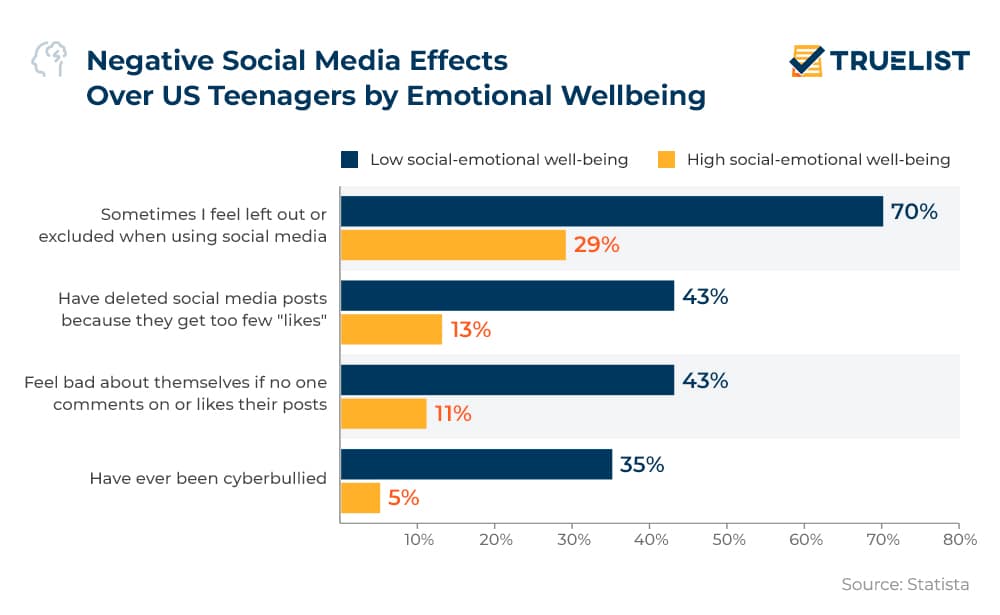
Parental Concerns and Youth Usage Patterns
- As of 2025, 1 in 3 U.S. parents say they regret giving smartphones to their children before age 12.
- 76% of parents report conflict with their teens over phone usage at least once per week.
- A Pew study in April 2025 showed that 48% of children aged 5–11 in the U.S. own a smartphone.
- Parental control app usage increased by 31% compared to 2024, with Qustodio and Bark leading installations.
- 43% of parents say they’ve found their children using phones past midnight on school nights.
- In families with strict screen time limits, compliance dropped to 54% in 2025.
- A new educational psychology report noted that early smartphone exposure (before age 8) correlates with increased impulsivity and restlessness.
- 2 in 5 U.S. households now include screen-free dinner rules, up from 1 in 4 just a year ago.
- Teen girls (13–17) spend 25% more time on smartphones than boys, largely due to social media and content creation apps.
- 28% of parents report buying “light phones” or minimal-feature mobile devices as alternatives for their children in 2025.
Smartphone Addiction and Physical Health Effects
- In 2025, 35% of heavy users (5+ hours/day) reported eye strain, blurred vision, or headaches due to prolonged screen exposure.
- Text neck syndrome is now reported by 1 in 5 smartphone users under 40, according to new physiotherapy clinic data.
- Digital thumb (repetitive strain injury from excessive scrolling) rose 18% among users aged 15–34.
- Sleep physicians report that blue light exposure continues to delay REM sleep cycles by an average of 23 minutes.
- 10% of children under 12 now show early signs of postural misalignment linked to device use.
- Obesity rates in sedentary teens with high smartphone usage have risen to 22.6%, a 2.1% increase over 2024.
- Smartphone overuse correlates with reduced physical activity, with high users walking 38% fewer steps/day than moderate users.
- A fitness analytics firm in 2025 found that smartwatch users with high phone screen time tend to ignore activity alerts 63% of the time.
- Carpal tunnel syndrome related to mobile use now affects an estimated 14 million people globally.
- Sleep apnea and shallow breathing episodes have increased in smartphone-dependent individuals, especially those using phones in bed for extended periods.
Most Popular Smartphone Activities Worldwide
- 74.70% of users use their smartphones primarily for messaging or chatting.
- 70.95% engage in emailing via their mobile devices.
- 62.90% perform online banking through their smartphones.
- 61.70% use their phones for listening to music.
- 61.10% watch videos on their smartphones regularly.
- 56.70% search for products online using mobile devices.
- 56.60% make online purchases through their smartphones.
- 54.55% upload videos or photos via mobile.
- 52.30% read news online on their smartphones.
- 47.45% use their phones for making internet calls.

Prevention and Digital Wellbeing Initiatives
- In 2025, over 60% of smartphones sold in the U.S. will include digital wellbeing tools pre-installed.
- Apple’s Screen Time and Google’s Digital Wellbeing reports show a 17% increase in users setting app limits.
- Focus mode activations are up 32% YoY, especially among professionals aged 30–50.
- Schools in Finland, Japan, and the Netherlands are pioneering device-free classroom initiatives, now adopted by 23% of EU schools.
- Tech-free retreats and “digital detox” programs are booming, with 5,300+ events hosted globally in Q1 2025.
- A Harvard digital health lab project found that mindfulness and usage-tracking apps can reduce screen time by 28% on average in 8 weeks.
- Fortune 500 companies are incorporating smartphone-use awareness into workplace wellness programs, benefiting over 1.4 million employees in 2025.
- Gen Alpha parents (millennials with young kids) are 41% more likely to delay smartphone introduction than Gen X parents were.
- National Public Radio (NPR) launched a new podcast series in February 2025 focused on smartphone balance, already reaching 3.1 million downloads.
- Therapist directories now list smartphone addiction as a filter, and searches for related therapy rose 44% YoY.
Recent Developments in Smartphone Usage Research
- In January 2025, the Journal of Behavioral Addictions confirmed that smartphone addiction triggers brain activity similar to substance dependencies.
- A new Stanford study revealed that even short digital detoxes (48 hours) improved attention span and working memory by 23%.
- Wearable data tracking is now being used to correlate screen time with heart rate variability and cortisol spikes.
- Real-time emotion tracking tools are being piloted in South Korea to identify when screen use begins to harm mood or productivity.
- AI-based time management apps are being integrated into smartphones to automatically reduce distractions based on user behavior.
- A 2025 MIT study is testing neurological mapping of compulsive phone use via non-invasive brain scans.
- “Micro-break” interventions, introduced in workplace settings, are found to reduce average screen time by 22 minutes/day.
- Gaming companies in the U.S. and Japan are now mandated to include “time spent” notifications for users under 18.
- UNESCO’s Global Digital Literacy Project launched in 2025, targeting 1 million students with balanced tech-use education.
- New legislation in Italy and Spain proposes warnings on smartphone packaging about potential psychological impacts, similar to cigarette labels.
Nomophobia Is Alarmingly Common Among Smartphone Users
- 99.2% of smartphone users show symptoms of nomophobia, or fear of being without their phone.
- 50% of users experience moderate nomophobia, making it the most common severity level.
- 37% have mild symptoms of nomophobia.
- 13% suffer from severe cases, indicating intense anxiety or stress when disconnected.
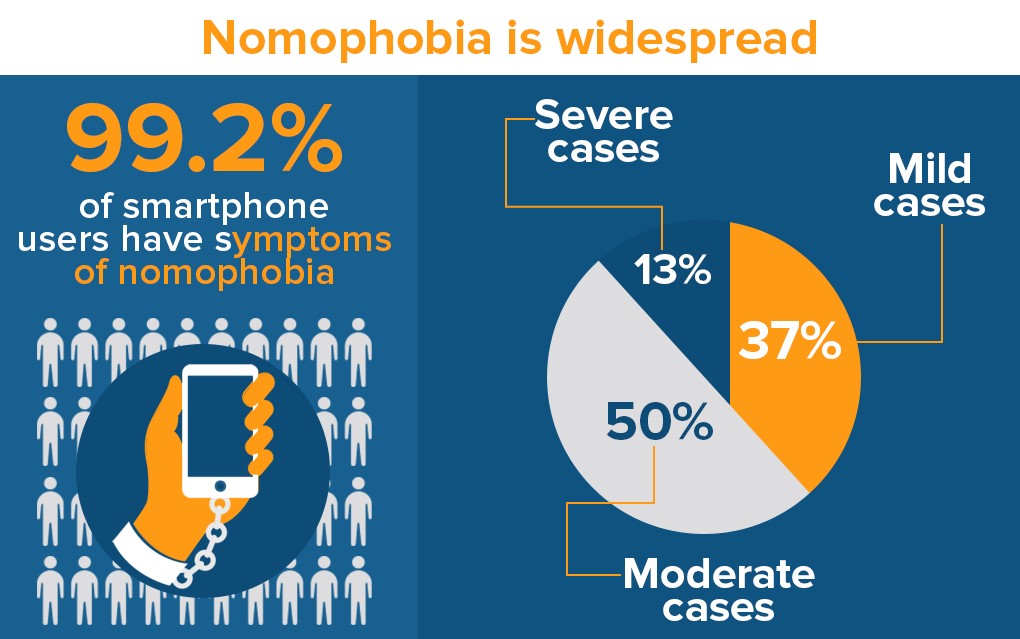
Conclusion
Smartphones are here to stay, but how we use them is still evolving. The 2025 statistics show that smartphone addiction is not only prevalent but deeply embedded across age groups, regions, and lifestyles. What started as a convenience is now a compulsion for many. From disrupted sleep to declining attention spans and rising anxiety, the cost of constant connection is clearer than ever. But there’s hope. Awareness is growing. Tools are improving. And people are starting to ask the right questions. The road ahead will depend not on rejecting smartphones but on redefining our relationship with them, one mindful tap at a time.
Sources
- https://www.slicktext.com/blog/2019/10/smartphone-addiction-statistics/
- https://explodingtopics.com/blog/smartphone-addiction-stats
- https://pmc.ncbi.nlm.nih.gov/articles/PMC5680647/
- https://www.sciencedirect.com/science/article/abs/pii/S0747563221004611
- https://bmcpsychiatry.biomedcentral.com/articles/10.1186/s12888-023-05322-6
- https://www.lotusbh.org/post/cell-phone-addiction-statistics
- https://www.harmonyhit.com/phone-screen-time-statistics/
- https://www.crossrivertherapy.com/research/cell-phone-addiction-statistics



